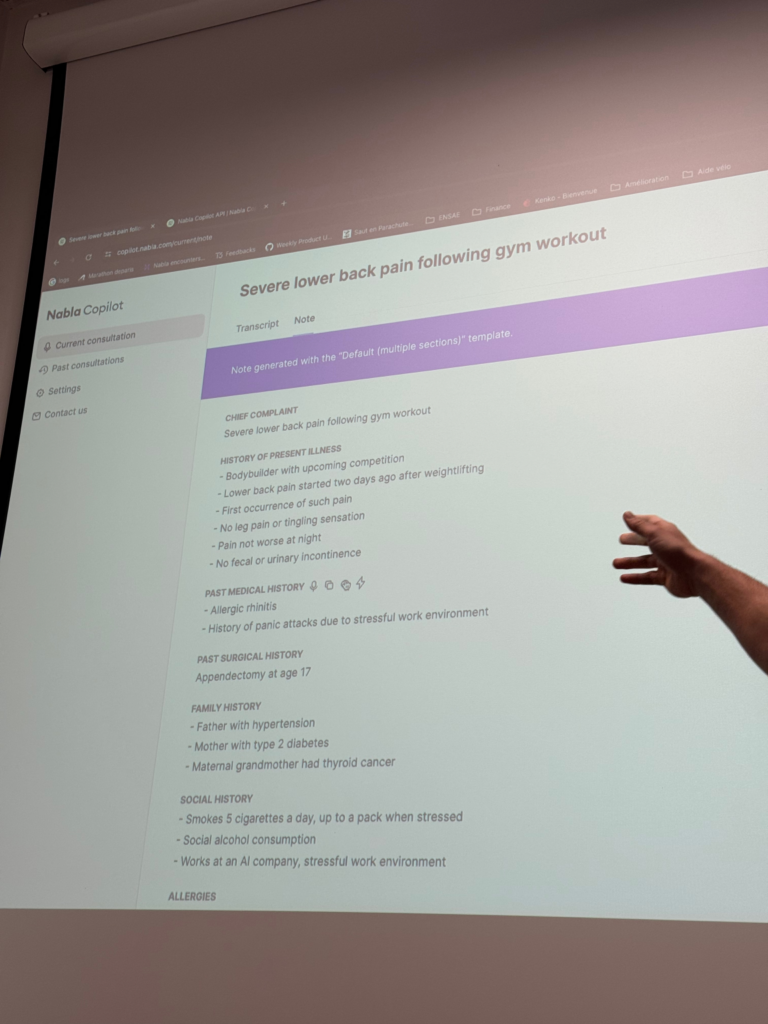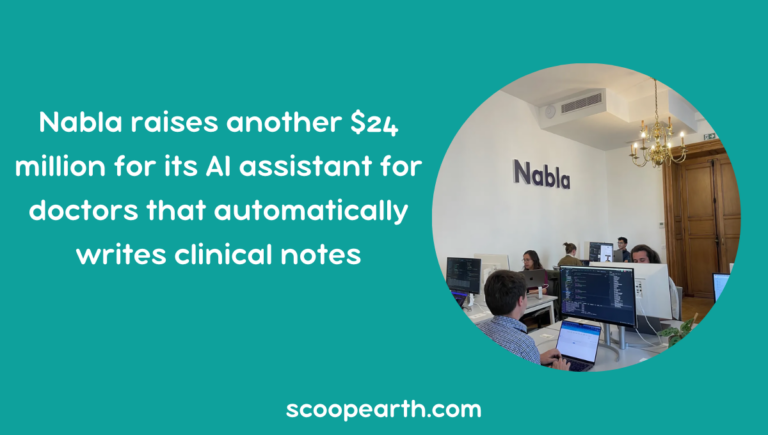Nabla, a Paris-based firm, has just announced a $24 million Series B fundraising round headed by Cathay Innovation, with participation from ZEBOX Ventures, CMA CGM’s corporate venture capital fund. This fundraising round comes just a few months after Nabla announced a large-scale agreement with Permanente Medical Group, a branch of Kaiser Permanente.

(Image Source: Techcrunch.com)
According to a source, Nabla’s valuation has risen to $180 million following today’s fundraising round. As part of this round, the company may raise further funds from investors in the United States.
Nabla has been developing an AI copilot for physicians and other medical professionals. The easiest way to describe it is as a silent work colleague who sits in the corner of the room, taking notes and writing medical reports for you.
Alexandre Lebrun, Delphine Groll, and Martin Raison started the startup. Lebrun, Nabla’s CEO, previously led Wit.ai, an AI assistant business that Facebook acquired. He later became engineering chief at Facebook’s AI research lab FAIR.
Nabla uses speech-to-text technology to convert the discussion into a written transcription. It supports both in-person consultations and telehealth engagements.
After the patient leaves, the doctor presses the stop button. Nabla then employs a huge language model enhanced with medical data and health-related talks to identify the consultation’s key data points, such as medical vitals, drug names, diseases, etc.
Nabla provides a detailed medical report in a minute or two, including a description of the consultation, prescriptions, and follow-up appointment letters.
As the name implies, Nabla Copilot does not seek to remove humans from the medical loop. Physicians still have the last word; they can amend reports before submitting them to their electronic health record system.
Instead, the company believes it can help doctors save time on administrative tasks, allowing them to focus more on patients.
“What we know about the foreseeable future is that we do not want to try to replace physicians. You’ve seen companies, such as Babylon in the United Kingdom, spend $1 billion attempting to develop chatbots and automate things immediately, removing doctors from the loop. And we long ago agreed with Nabla Copilot that [doctors] are the pilots, and we operate alongside them,” Lebrun explained.
“It’s similar to automation for autonomous vehicles. We’re still at level two today. We will begin stage three soon, with clinical assurance support. Then there’s level four clinical decision support, which requires FDA approval since you’re making decisions you can’t explain,” he continued.
Nabla’s Privacy Model
Nabla is now accessible as a web application and a Google Chrome extension. The company is fully aware that it is managing sensitive information. If the doctor and the patient approve, it only stores audio or medical notes on its servers.
Nabla focuses on data processing rather than data storage. Following a consultation, the audio file is destroyed, and the transcript is saved in the EHR doctors currently use for patient records.
In more technical words, when a physician begins recording, the audio is transcribed in real-time using a fine-tuned speech-to-text API. The company uses an off-the-shelf speech-to-text API from Microsoft Azure and its speech-to-text model (a refined version of the open-source Whisper model).
The transcript is initially pseudonymized, which means that personally identifiable information is replaced by variables. An extensive language model processes pseudonymized transcripts. Historically, Nabla used GPT-3 and GPT-4 as its primary large language model. As a business user, Nabla can inform OpenAI that it cannot keep its data and train its large language model using those consultations.
But Nabla has also been experimenting with a fine-tuned version of Llama 2. “In the future, we envision using more and more narrow models as opposed to general models,” Lebrun said.
After the LLM has processed the transcript, Nabla de-pseudonymizes the results. Doctors can view the note, saved on the computer in a local web browser storage file. Notes can be exported to EHRs.
Doctors, on the other hand, can approve and request the patient’s agreement to share medical records with Nabla to fix transcription problems. And, given that Nabla is on schedule to process over 3 million consultations each year in three languages, real-world data will likely help Nabla improve rapidly.
(Information Source: Techcrunch.com)

